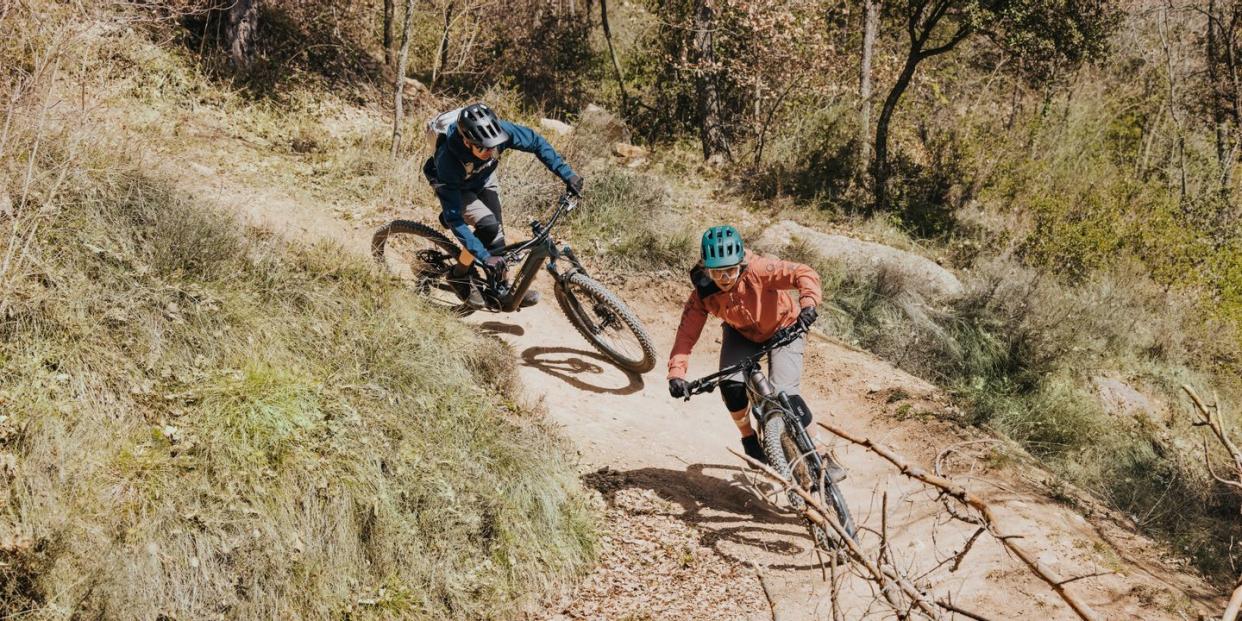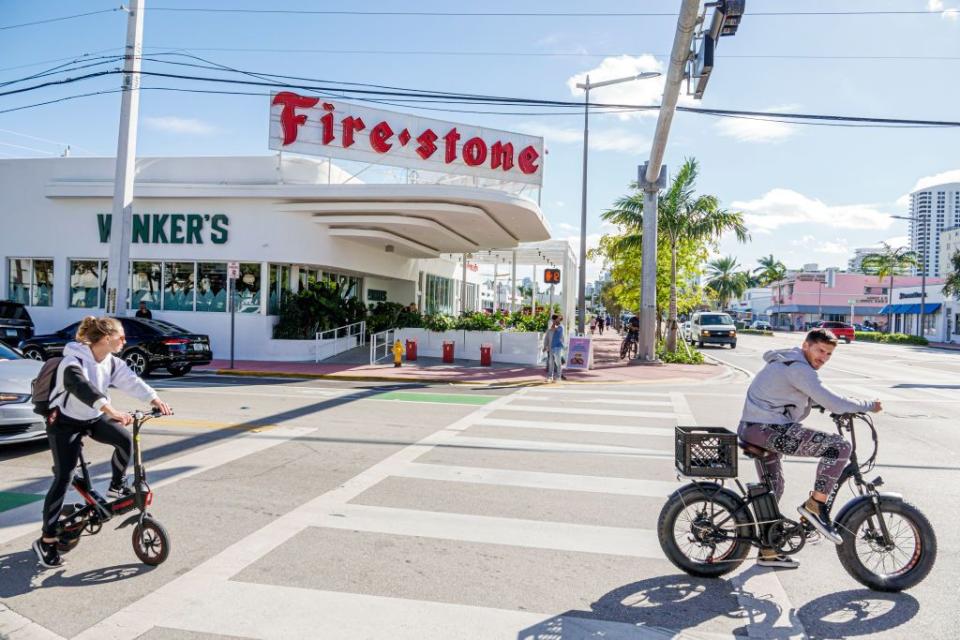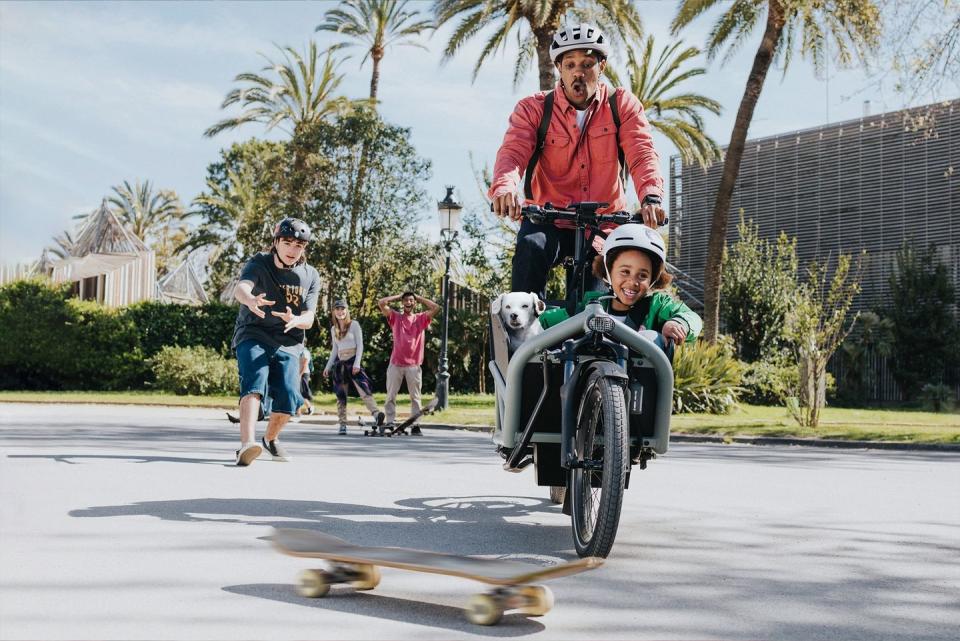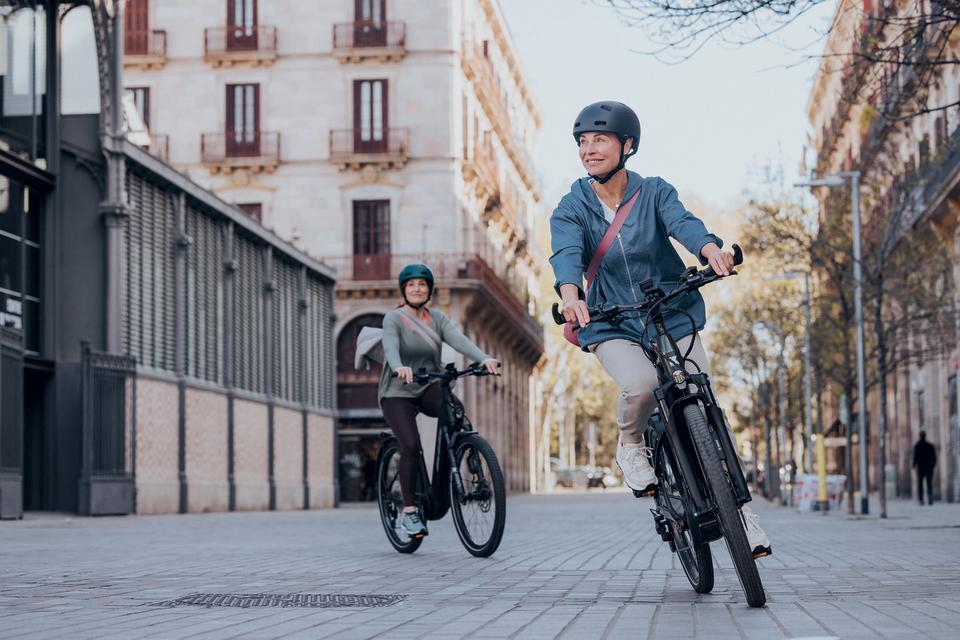Even Electric Bicycles Have ABS Now

Using knowledge from its automotive and motorcycle divisions, Bosch has created ABS for e-bikes.
Bosch's e-bike ABS mitigates front wheel lockup and curbs rear wheel lift, to provide riders with the confidence to use full braking force.
Four different ABS modes are available—Cargo, Touring, Allroad, and Trail—with OEM partner bicycles set to implement the technology this fall.
If you've ever successfully replaced an oil filter on a European car, avoided collision through the use of antilock brakes, or even simply followed a route using an onboard navigation system, you have Bosch to thank. Founded in 1886, the German company is a household name for anyone familiar with the mobility sector. Responsible for producing OEM sensors, filters, drive motors, and electronic software, Bosch has historically been at the forefront of mobility design. It was, after all, the developer of automotive antilock brake systems in 1978.
These days, things look a little different around Bosch. As the transportation industry goes through rapid changes in both materials and mindset, the company has shifted its mission from subdivided sectors of vehicle business to integrating both four- and two-wheeled vehicles under the same roof, now called Bosch Mobility. And one particularly interesting vehicle subset to come out of this transition is the Bosch eBike branch, dedicated to the production of battery-powered bicycle drive motors and eBike safety systems.

The rise of these two-wheeled vehicles that blend bicycle ergonomics with battery-electric propulsion has been swift. Urban commuters, typically with a chunk of change to spare, have realized that eBike commuting is faster than many public transit systems, sweatless compared to traditional bicycles, and easier on the parking front. But with all this power comes additional responsibility, and slowing down an 80-pound electric bike is a bit different than even the heaviest traditional bike.
To remedy this inertial problem, Bosch went back to its roots and designed an e-bike-specific ABS system. But how exactly does it work? And is it another like the ABS systems in cars and motorcycles that Bosch is famous for? We sat down with Claudio Wasko, vice president and general manager of Bosch eBike Systems, to learn more about this system.

The basics of the system are similar to what car and motorcycle folks are familiar with: an ABS control unit is supplied with data from front and rear wheel sensors that then is used to modulate braking pressure on slippery or loose surfaces. Additionally, Bosch's e-bike ABS system is available with four situational modes—Cargo, Touring, Allroad, and Trail—similar to modern motorcycle braking setups. However, because this system is bicycle-specific, it functions quite differently from traditional automotive ABS.
For one, the antilock system only applies to the front wheel. While the front wheel sensor is constantly monitoring speed and works to eliminate lockup, the rear sensor monitors wheel lift and works with the front sensor to momentarily reduce braking pressure when there is a chance of riders going over the handlebars. Additionally, the ABS integration doesn't provide sensory feedback to the rider, meaning it won't rattle the handlebars as ABS engagement does on a brake pedal. Wasko says that this is actually a safer and less distracting way to integrate ABS on e-bikes, as it limits confusion during critical moments of emergency braking.

"Our focus is very strong on product safety, but also rider safety. So ABS is a strong focus for us," said Wasko, in an interview with Autoweek. "It's about giving you the confidence to really use your brakes."
Not every surface, however, is fit for the same level of braking. And coming to a complete emergency stop is not the only thing that ABS is good for, especially in a bicycle application. Specifically, the Allroad and Trail modes that Bosch's ABS system has allows for speed modulation on loose or slippery surfaces by using less brake pressure when ABS is engaged. This mimics the sort of off-road ABS found on modern adventure motorcycles, typically allowing for rear slippage and speed consistency through front-end braking. Wasko also confirmed that this system was developed from Bosch's motorcycle ABS technology, which it has been working on since 1995.

Applying ABS to an e-bike may seem unnecessary, but Bosch says it's imperative for riders safety going forward. A study done by Bosch Accident Research even says that the addition of ABS on e-bikes could reduce all e-bike accidents by 29% each year. Even if you don't buy into Bosch's study, independent studies show that the additional weight of e-bikes can increase stopping distances (though beefed-up braking hardware usually mitigates this) or even scare riders away using full braking force.
Bosch's second-generation ABS system will be introduced to North America for the first time this fall, on OEM bikes from manufacturers like Bianchi, Cannondale, and Diamondback. As e-bikes become increasingly popular in urban environments for both personal and commercial uses, Bosch hopes to lead the way in terms of e-bike safety and education. And releasing this safety system in American cities with less roadway etiquette than many European cities is a surefire way to gather rider insights and data on its efficacy.

